Reaction – the first housewares collection from Nervous System
Nervous System has released Reaction, their first collection of housewares. The collection includes porcelain cups and plates and matching 3D printed lamps. The pieces are intricately embossed with intertwining patterns of ridges and valleys that create a unique experience that is both visual and tactile. The designs are grown through a computer simulation of reaction-diffusion, a chemical patterning mechanism observed in a myriad of biological systems, from animal prints to slime molds.
Products
Two porcelain tableware designs. These are dishwasher and microwave safe.
The Reaction Cup – $20 each or $60 for a set of 4. 3” x3.5” high (7.6×8.9cm), holds approximately 10 oz of fluid. It works for both cold and hot beverages, as the ridges provide an extra layer of insulation.
The Reaction Plate – $25 each or $80 for a set of 4. 8” (20.3cm) diameter. Features a spiraling embossed reaction pattern. The ridges are more highly raise at the edges of the plate and get flatter towards the center.
Lamps
Lamps come in a variety of styles and sizes and are made of rigid nylon plastic. The forms are reminiscent of corals, sand dunes, and seed pods. The pattern modulates the surface thickness to reveal a cellular texture when lit. Each is lit by a 3-watt Cree LED fixture with switch and wall US wall plug. More information is available on the individual product pages.
The Reaction Lamp – 7” diameter (~18cm), $900
The large Seed Lamp – 10.5” diameter (~27cm) $1400
The small Seed Lamp – 7” diameter (~18cm) $900
The cup and plates sets come in the packaging (shown below) which describes the ideas behind the designs.
Inspiration
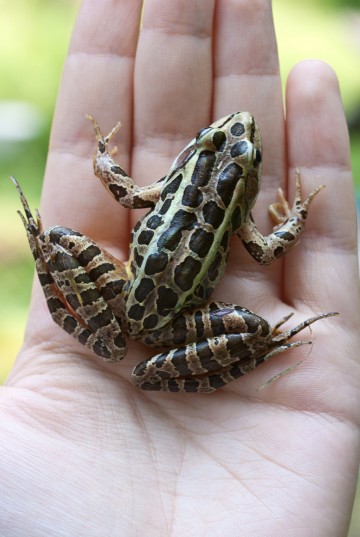
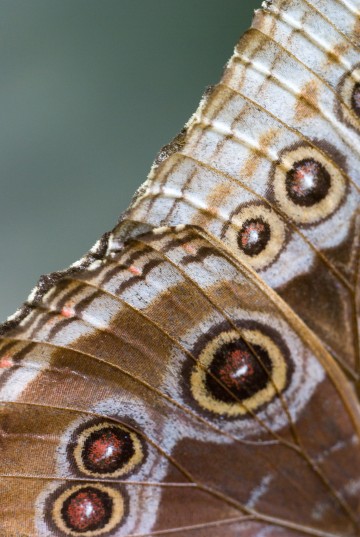 photographs of animal patternings by Jessica Rosenkrantz of Nervous System
photographs of animal patternings by Jessica Rosenkrantz of Nervous System
Reaction-diffusion (RD) is a canonical example of complex behavior that emerges from a simple set of rules. RD models a set of substances that are diffusing, or spreading; these substances also react with one another to create new substances. This simple idea has been suggested as a model for a diverse set of biological phenomena. All kinds of animals from fish to zebras display interesting color patterns on their skin and shells which play important roles in their behavior. However, the underlying cause of these patterns is still not understood. In 1952, Alan Turing suggested the RD system as an answer to not only this question but also the more general one of why cells differentiate. How do individual cells locate themselves in the larger scale structure and pattern of an organism? The patterns seen on the animals occur over a scale much larger than a cell, yet they display remarkable self-similarity on every part of the animal’s body.
Turing studied the behavior of a complex system in which two substances interact with each other and diffuse at different rates. He proved mathematically that such a system can form stable periodic patterns even from uniform starting conditions. One of the most interesting things about RD is that you can have a homogeneous system where every cell is doing exactly the same action (for instance just producing a certain amount of some chemicals); but from this one process a large scale structure emerges.
You can read more about reaction diffusion in our previous blog posts on our work with it.
System
Fabrication
After being computationally grown, the digital objects are made physical through 3D printing.
The lamps are produced directly using selective laser sintering, a type of 3d-printing where nylon powder is fused by a laser. However, the cups are plates are produced by slipcasting, a process where clay slurry is poured into plaster molds. A master cup and plate model is printed using SLA to create molds.
(SLA positives of the cup and plate designs for slipcasting)
These models are produced 15% larger than the final pieces to account for shrinkage that occurs when porcelain is fired. A rubber positive master mold is made of these 3D prints, which is used for the creation of plaster production molds. Slip is poured into each mold and dries. The plaster mold absorbs moisture, hardening the exterior of the slip, the rest is poured out, leaving a shell. This shell is the cup; but, it’s in a “green” state and must be fired in a kiln and glazed to realize the final product.
Sketches
Here are some images of sketches we produced while working on the designs for the cups, plates and lamps.

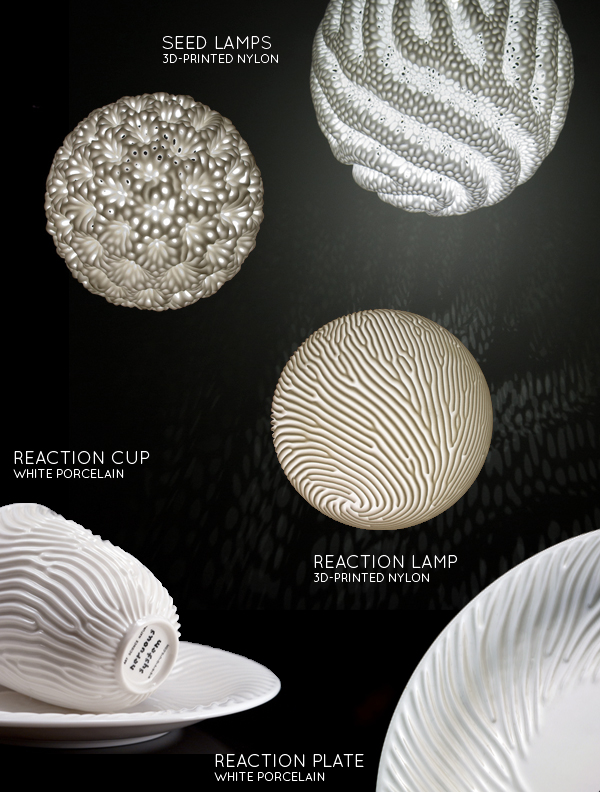
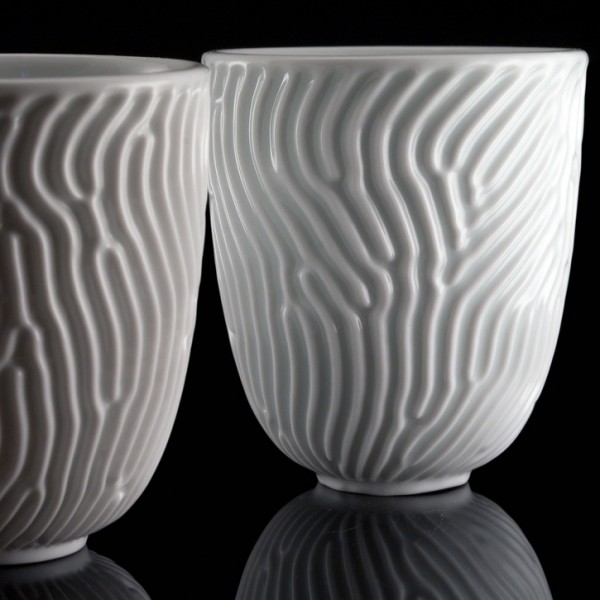
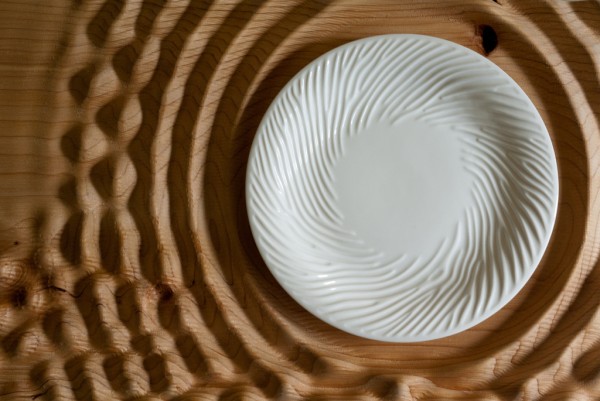

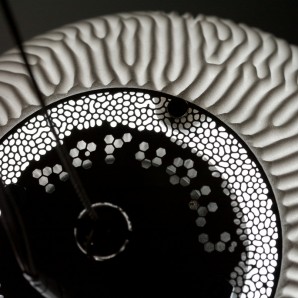
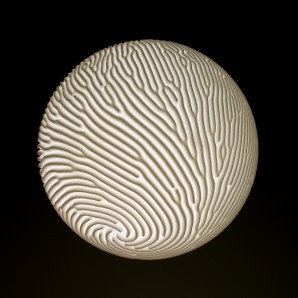
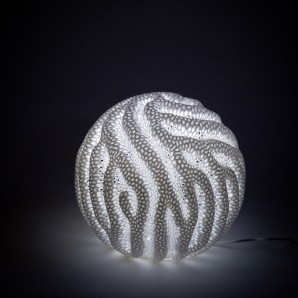
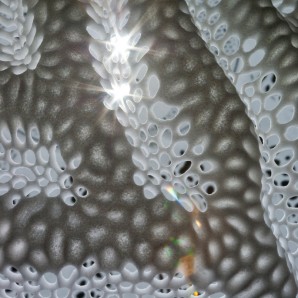
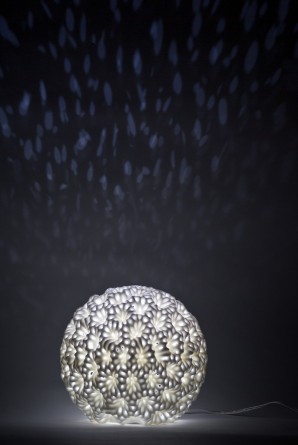
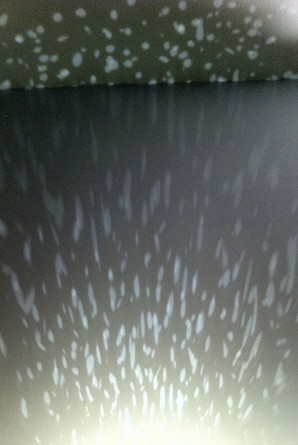
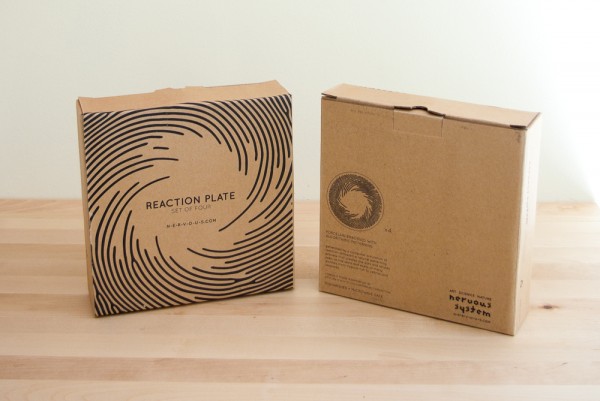
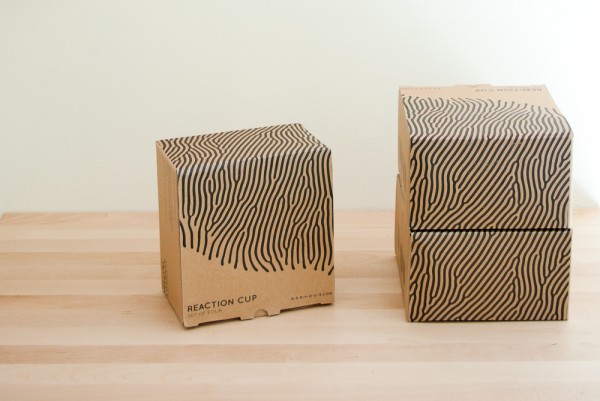
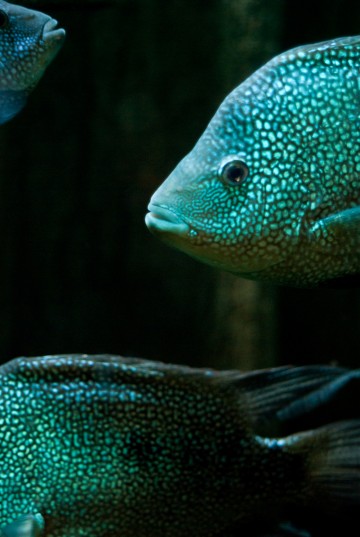
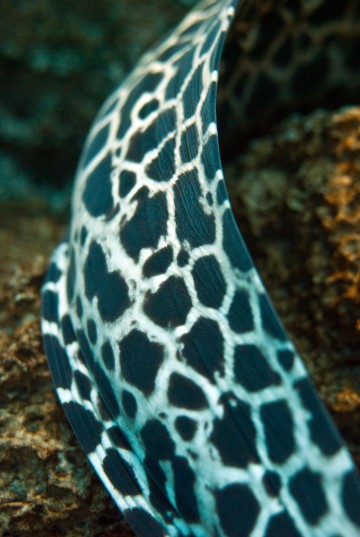
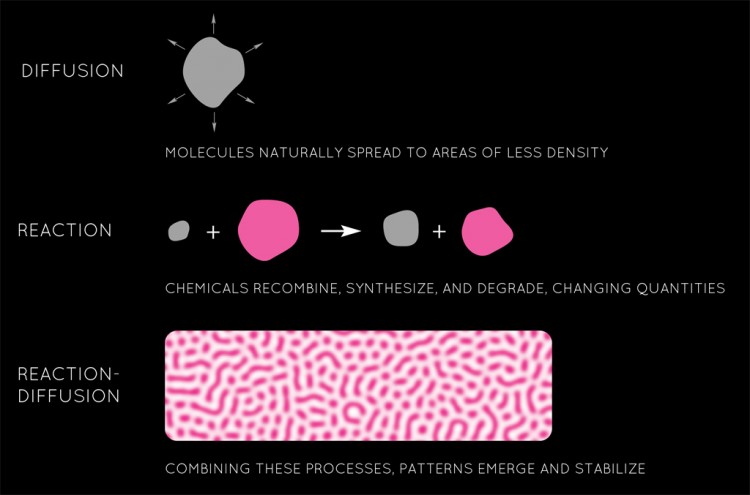

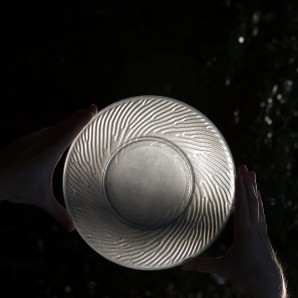
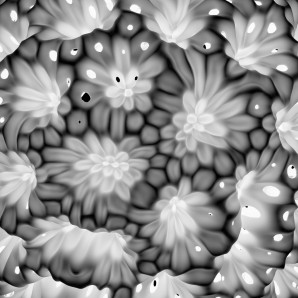
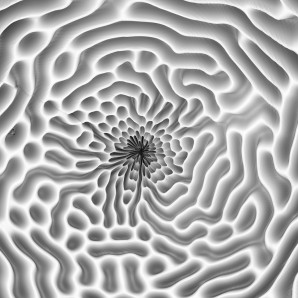
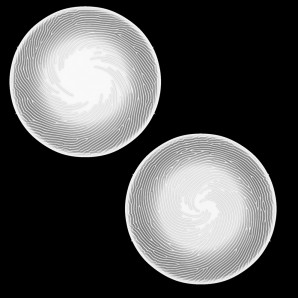
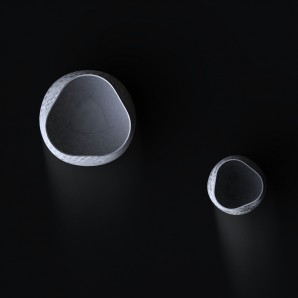
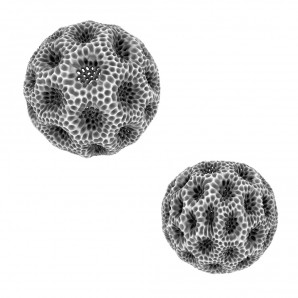
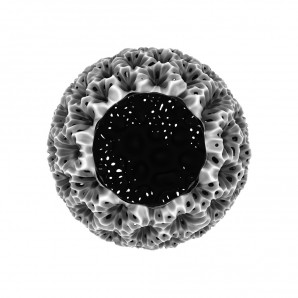
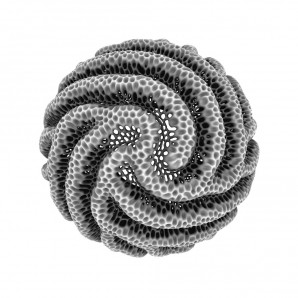
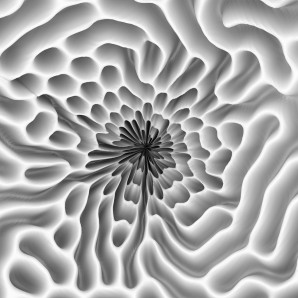
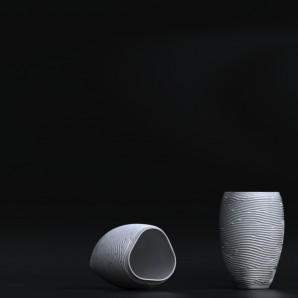

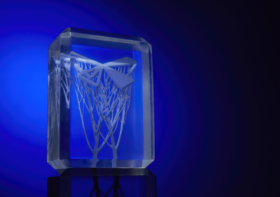

Nervous System – explorations in generative design and natural phenomena » Blog Archive » Holiday Sale! and a gift guide
[…] honor of the release of our housewares collection, Reaction, we’re having a holiday sale. Use the coupon code […]
The first steps | Breaking Reaction diffusion for stereolithography
[…] Housewares inspired by the nervous system by Nervous […]